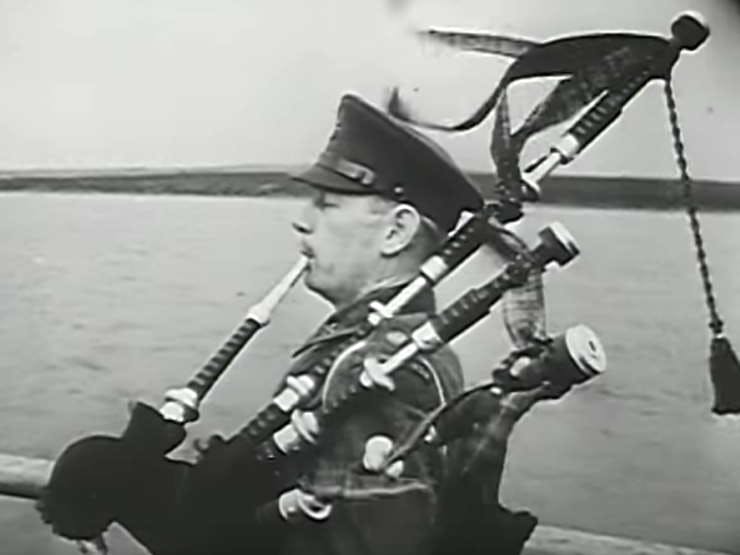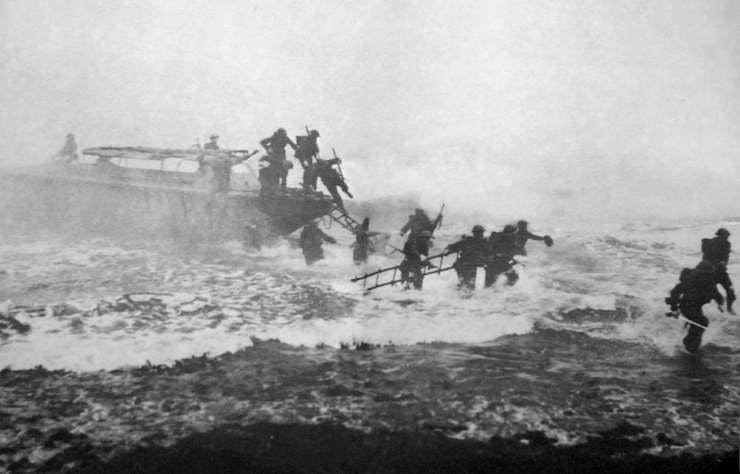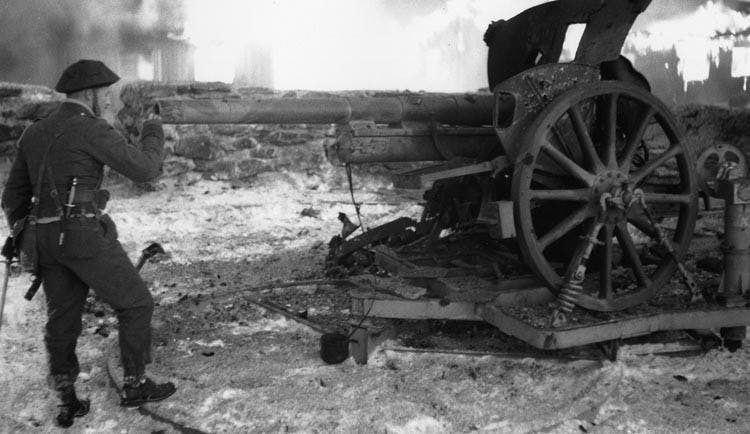The Unconventional Hero: Lieutenant Colonel Jack Churchill
Lieutenant Colonel Jack “Mad Jack” Churchill, was no ordinary soldier during World War II. This British Army officer made a name for himself by using unusual weapons like a longbow, arrows, and a Scottish broadsword. Jack’s amazing adventures and unmatched bravery made him a one-of-a-kind hero.
Early Life and Career
Jack was born in 1906 in Hong Kong to British parents. Growing up, he eventually moved to England, where his father, a civil servant, sent him to the top-notch Royal Military College, Sandhurst. Jack joined the Manchester Regiment in 1926, but after a decade, he switched gears to become a newspaper editor, male model, and even an actor.

When World War II broke out, Jack felt the call to serve once more. He rejoined the British Army and the Manchester Regiment, heading to France with his trusty sword, war bow, and arrows. Jack was a firm believer that an officer should always carry a sword in battle. It was this commitment to tradition that made him a legendary figure.
Rejoining the Army and Dunkirk Heroics
Jack’s heroics really shined during the retreat to Dunkirk. In one instance, he managed to save a disabled British tank by attaching six trucks together. He also rescued a wounded officer, earning his first Military Cross. When the British Army started looking for volunteers to join the new Commando forces, Jack was more than ready to step up.

Commando Training and the Raid on Vaagso
As a Commando, Jack “Mad Jack” Churchill threw himself into the intense training and harsh conditions. He had a unique way of talking with his fellow soldiers, using plain language they could easily understand and respect.
In December 1941, Jack led a daring assault on the German garrison at Vaagso, Norway. His mission was to take out the German shore batteries on Maaloy Island. Fearlessly storming ashore with his sword in hand, Jack and his men captured the island and its battery with minimal casualties. This victory earned Jack his second Military Cross.
The Salerno Landings and Piegoletti Night Attack
In 1943, Jack was in command of Number 2 Commando during the Salerno landings in Italy. His job was to stop the Germans from bombarding the western half of the Bay of Salerno. Thanks to Jack’s leadership, the final counterattack crushed the last German attempt to destroy the Commando beachhead. For this he was awarded the Distinguished Service Order.

Who is that? Jack Churchill leading British troop into battle with sword in hand.
During the fierce battle at Salerno, Jack planned a night attack on the town of Piegoletti. He organized his men into six columns and sent them charging through the darkness, yelling “commando!” to confuse the enemy. The tactic worked brilliantly, capturing 136 prisoners.
Jack himself played a major role in capturing more prisoners. With his sword and the help of Corporal Ruffell, Jack took 42 prisoners in a daring, movie-like maneuver. Afterward, he marched them back to British lines.

Commanding the Island of Vis
In January 1944, Jack’s next mission took him to the Adriatic Sea. The British forces and Yugoslav partisans were fighting German garrisons along the Dalmatian coast. Jack became the commander of the island of Vis, leading No. 2 Commando and about 1,000 Yugoslav partisans. From this strategic location, the Royal Air Force and small boats of the Royal Navy launched attacks on the German-held Adriatic islands. Jack’s Commandos joined the Navy as boarding parties and carried out night raids to harass German garrisons on other Dalmatian islands.
“Any officer who goes into action without his sword is improperly dressed.” ~ “Mad Jack” Churchill

 Additional Facts
Additional Facts
1974
Even though World War II actually ended in 1945, Teruo Nakamura, a soldier in the Japanese military, thought the war continued as his unit hid in an Indonesian jungle. Alone in the jungle, he adapted to his surroundings, unaware that the world had moved on. It was only when he was discovered in 1974 that he learned the truth about the war’s end. He finally surrendered after nearly three decades of isolation.
15,000
During WWII, the urgent need for pilots led to hastily organized aviation programs with insufficient safety measures, resulting in over 15,000 deaths during training. Primarily caused by pilot error or mechanical failure, the B-24 bomber was even dubbed “the flying coffin” due to its danger. In fact, almost 30% of the 52,000 American flight crew fatalities occurred outside of conflict, highlighting the perils faced even before entering the battleground.
Soldier Bear
In 1942, Polish troops evacuated from the Soviet Union to Iran, befriending a Syrian brown bear named Wojtek. Officially enlisted as a private, Wojtek accompanied the men to Italy from 1943-4, assisting in carrying heavy ammunition and becoming a well-known figure among the troops.



